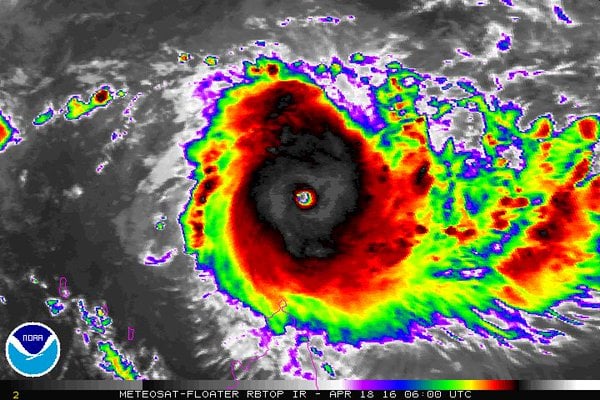Tropical Cyclone Fantala just became the Indian Ocean’s most powerful storm ever recorded with mighty winds of more than 170 mph.
Fantala is the latest in a series of abnormally menacing cyclones after Hurricane Patricia in October, and Hurricane Winston in February.

Hurricane Patricia became the strongest-known storm in the Northeast Pacific in October, and February’s Winston caused devastation in Fiji as the most-potent cyclone on record in the Southwest Pacific.
Now we have Fantala that just made history becoming the strongest-known storm in the Indian Ocean.
#Fantala from storm to Cat 5 cyclone seen by Met-10 https://t.co/FSeh7on5uR Thnx also to @DanLindsey77 for VIIRS pic pic.twitter.com/T8ljW076Nx
— EUMETSAT Users (@eumetsat_users) April 19, 2016
The mighty tempest spun itself up to 150 knots (173 mph) on Monday, surpassing the 145-knot (167 mph) barrage of Super Cyclonic Storm Gonu in 2007.

Yes, this wind speed would make it a Category 5 hurricane on the Saffir-Simpson wind scale.

Although it simmered down to about 85 knots on Wednesday, and is expected to wander southeast for a couple days before running out of steam, Fantala is the Indian Ocean’s most powerful storm on record.

The third record-breaking storm in under a year might owe its ferocity to human activity.
Fantala is the latest in a series of abnormally menacing cyclones. This progression of monster storms might have something to due with human activity.
Many parts of the tropics have seen record-warm sea surface temperatures in 2015 and 2016, triggered by a strong El Niño on top of longer-term warming caused by human-produced greenhouse gases.

These unusual readings have added fuel to the fire of tropical cyclone production.












